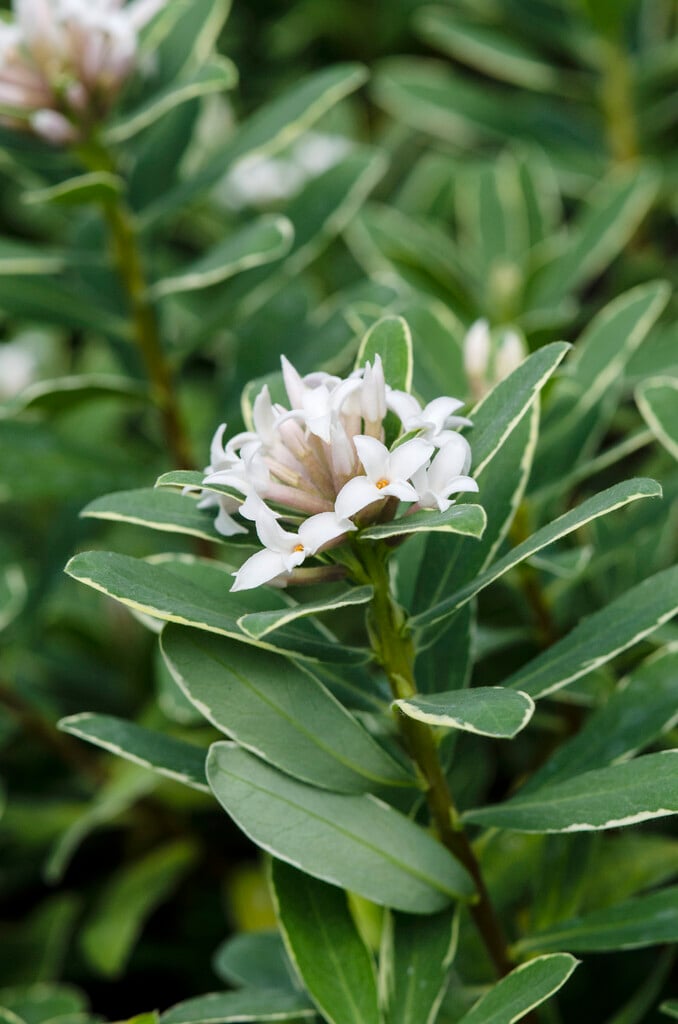Daphne × transatlantica 'Summer Ice' (v)
daphne 'Summer Ice'
A neat and bushy shrub to 1.2m, bearing leathery green leaves with cream coloured margins; the plant is evergreen in mild winters. From late spring to late summer it produces fragrant white flowers flushed pink

Buy this plant
Size
Ultimate height
1–1.5 metresTime to ultimate height
5–10 yearsUltimate spread
1–1.5 metresGrowing conditions
Moisture
Moist but well–drainedpH
Acid, Alkaline, NeutralColour & scent
| Stem | Flower | Foliage | Fruit | |
| Spring | White Pink | Green Cream | ||
|---|---|---|---|---|
| Summer | White Pink | Green Cream | ||
| Autumn | Green Cream | |||
| Winter | Green Cream |
Position
- Full sun
- Partial shade
Aspect
East–facing or North–facing or South–facing or West–facing
Exposure
Sheltered Hardiness
H4Botanical details
- Family
- Thymelaeaceae
- Native to GB / Ireland
- No
- Foliage
- Semi evergreen
- Habit
- Bushy
- Potentially harmful
- TOXIC if eaten, skin irritant. Wear gloves and other protective equipment when handling TOXIC to pets - see the HTA guide to potentially harmful plants for further information and useful contact numbers
- Genus
Daphne can be deciduous or evergreen shrubs with small, usually very fragrant tubular, 4-lobed flowers, often followed by colourful berries
- Name status
Accepted
How to grow
Cultivation
Grow in moist but well-drained, humus rich soil in full sun to partial shade. Mulch annually in spring with well-rotted organic matter to keep the roots cool. See daphne cultivation for further information
Propagation
Propagate by semi-ripe heel cuttings
Suggested planting locations and garden types
- City and courtyard gardens
- Patio and container plants
- Low Maintenance
- Flower borders and beds
Pruning
See pruning groups 1 and 8; keep pruning to a minimum
Pests
May be susceptible to aphids
Diseases
May be susceptible to honey fungus (rarely), phytophthora root rot, fungal leaf spot and virus diseases
Get involved
The Royal Horticultural Society is the UK’s leading gardening charity. We aim to enrich everyone’s life through plants, and make the UK a greener and more beautiful place.